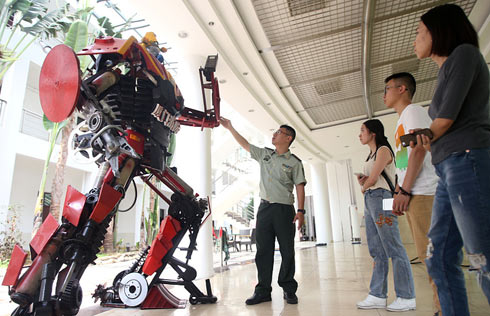The case for Huawei in US
By Dan Steinbock (China Daily) Updated: 2012-10-12 08:10Starting in a one-room workshop in Shenzhen in the early 1980s, Huawei is today a global giant generating more than $32 billion in annual revenues and with offices in more than 140 countries.
Despite its global success, Huawei has been rebuffed in the United States time and time again. During the past few years, unspecified allegations in the US have led to severe anti-market measures to block Huawei's expansion efforts. In a report released on Monday, the House intelligence committee recommends that the US block acquisitions or mergers involving Huawei and ZTE. It also recommends that the US government avoid using equipment from the firms.
Huawei entered the US on Valentine's Day in 2001. Despite repeated bids, its efforts to win a major contract from top-tier US carriers AT&T, Sprint, T-Mobile and Verizon have been frustrated.
A few examples: In 2007, Huawei's effort to buy 3Com was thwarted by US government's intervention. In fall 2010, Sprint Nextel solicited bids for a network upgrade. Huawei reportedly offered a deal that would have saved the carrier at least $800 million from its existing costs in its first year of operation alone. But US Congress members launched a letter-writing campaign urging Sprint not to include Huawei, and Gary Locke, then US commerce secretary and present US ambassador to China, called the Sprint CEO to convey his "very deep concerns" about Huawei and national security.
These interventions, in turn, have led to a series of initiatives on Capitol Hill.
While Huawei employs 140,000 people worldwide, less than 1.3 percent of its employees are in the US. In light of business potential, this translates into missed opportunities. If, however, futile friction could be overcome, there are complementary opportunities for Huawei and the US government, companies, innovation and consumers.
Huawei's expansion in the US brings jobs, capital and tax revenues. It continues to exert a major competitive impact on price rivalry, through efficiencies and innovation. It has seven advanced research and development centers and partners with more than 50 higher education institutions in the US, which support high quality jobs and productive capital.
Because of its efforts to ensure cyber security - an end-to-end global cyber security assurance system, independent third-party testing institutes, opened up source code, and former CIO for the United Kingdom government John Suffolk as its global chief cyber security officer - Huawei could be seen as a role model in the ICT sector.
Half of the 56 networks functioning across the world today use Huawei technologies. It is this trust that motivates Huawei's global success. Like Sam Walton's Wal-Mart in the US, Huawei first created a foothold in rural regions, which were neglected by foreign as well as Chinese companies, and only then it proceeded to capture urban centers.
After a difficult transition in the early 2000s, it leveraged its strategy in global markets - starting with developing regions - with the support of US consulting giants, such as IBM. But in the West, almost every story about Huawei begins or ends with speculation on its corporate governance and its founder Ren Zhengfei, who served in the military for five years about three decades ago. The argument is that since Huawei is not public, it must be suspicious.
- What is bitcoin?
- Garfield the star at new Six Flags theme park
- China successfully tests marine natural gas hydrates
- China Eastern plans to create 'Silk Road in the air'
- Surging Chinese investment brings more jobs to local Americans
- China's first 6th -generation AMOLED display screen goes into production
- Pilot zones for Made in China 2025 slated to open
- China invests $4b in Belt and Road countries in four months


















